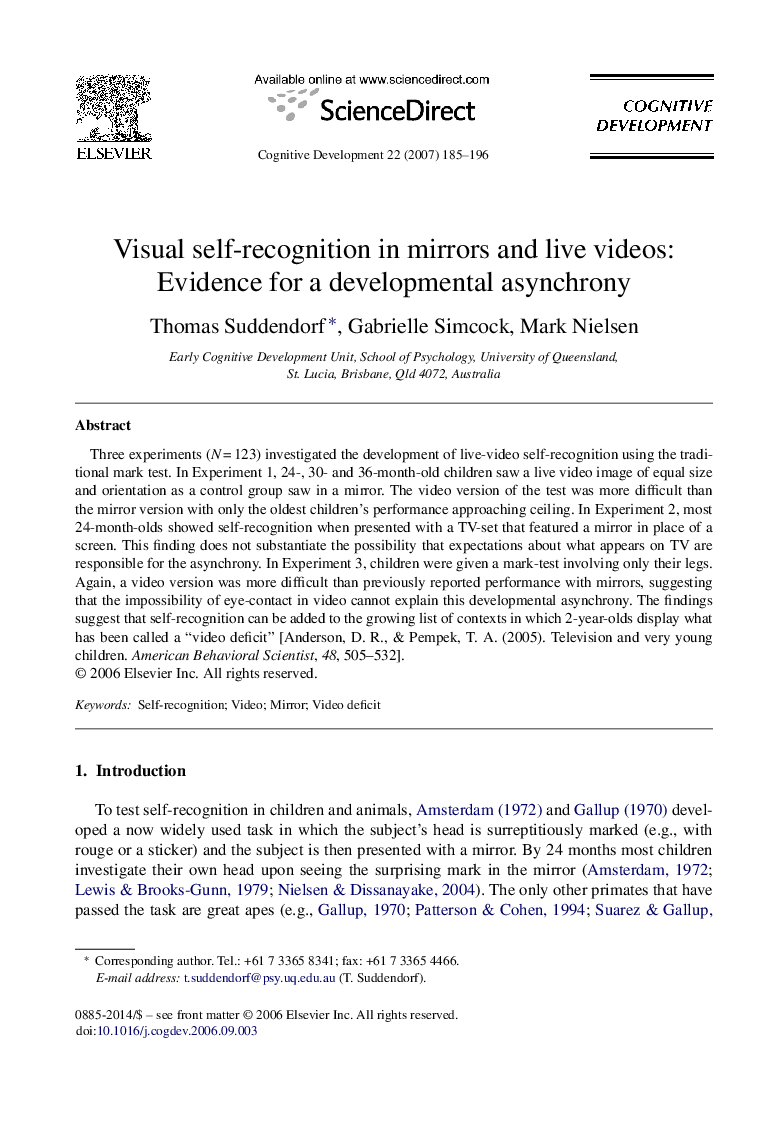| Article ID | Journal | Published Year | Pages | File Type |
|---|---|---|---|---|
| 916662 | Cognitive Development | 2007 | 12 Pages |
Three experiments (N = 123) investigated the development of live-video self-recognition using the traditional mark test. In Experiment 1, 24-, 30- and 36-month-old children saw a live video image of equal size and orientation as a control group saw in a mirror. The video version of the test was more difficult than the mirror version with only the oldest children's performance approaching ceiling. In Experiment 2, most 24-month-olds showed self-recognition when presented with a TV-set that featured a mirror in place of a screen. This finding does not substantiate the possibility that expectations about what appears on TV are responsible for the asynchrony. In Experiment 3, children were given a mark-test involving only their legs. Again, a video version was more difficult than previously reported performance with mirrors, suggesting that the impossibility of eye-contact in video cannot explain this developmental asynchrony. The findings suggest that self-recognition can be added to the growing list of contexts in which 2-year-olds display what has been called a “video deficit” [Anderson, D. R., & Pempek, T. A. (2005). Television and very young children. American Behavioral Scientist, 48, 505–532].
